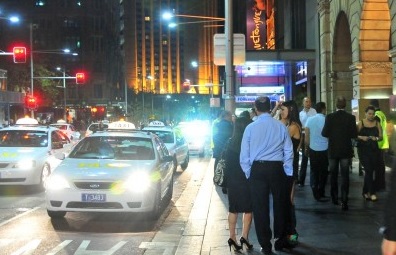
Wednesday, September 18th, 2013
Sydney’s major commercial office landlords are saving more than $25 million a year on their electricity bills, thanks to more energy efficient buildings.
The Better Buildings Partnership, which includes the owners of more than half the commercial office space in the city centre, was established by the City of Sydney.
Detailed data show members had reduced their building emissions by an average three per cent each year from 2005/6, despite a 14 per cent increase in the amount of space leased over the same period.
Lord Mayor Clover Moore said the new figures show the Better Buildings Partnership is on the right track.
“This 25 per cent cut in carbon emissions equates to more than $25 million saved on the members’ annual power bills,” the Lord Mayor said.“It shows how quickly strong leadership and a practical commitment can turn things around – and the value it can deliver for the bottom line.”
“With half our city’s greenhouse gas emissions coming from its commercial buildings, the Better Buildings Partnership shows just how much can be achieved.”
Already, some of the buildings have seen cuts of up to 70 per cent, thanks to innovative measures such as high efficiency lighting, plant upgrades and co-generation and tri generation schemes that produce low carbon electricity and hot water for heating and cooling.
The co-chairs of the BBP, Emlyn Keane from AMP Capital and Paul Edwards from Mirvac, are delighted with the energy savings revealed in the new data but say it is vital to find more innovative, energy saving solutions in the near future.
“This fantastic result shows what a difference we can make when we get on with the job of cutting energy use and delivering savings to our tenants and value to investors,” Mr Edwards said.
“In individual buildings like 10-20 Bond Street, owned by Investa and Mirvac, we have seen dramatic savings of more than 60 per cent by improving energy efficiency across the board and getting electricity from low carbon sources.”
“In Bond Street, built in the late 1970s, savings came from upgrading the lifts, updating the air conditioning and installing a trigeneration plant, which significantly reduced demand for heating and cooling while supplying low-carbon electricity.”
Investa has achieved similar results at the 24-year-old Centennial Plaza complex, where emissions have been reduced by over 70 per cent with measures that include sophisticated building management and air conditioning systems that deliver services as and when required to minimise energy wastage.
Mr Keane said while individual owners will continue to improve energy efficiency in their buildings, he wants the Better Buildings Partnership to now focus on broader issues to help the rest of the sector.
“We need to educate tenants on how they can reduce their energy use and adopt best practice leases that encourage landlords and tenants to work together to make major energy savings,” he said.
“And we will continue to work with the City on the development of the renewable energy and energy efficiency master plans that will help to transform the city into a low carbon society.”
Mr Keane said his members had been able to make energy savings with a range of government programs delivering support and financial incentives.
“It is vital that governments continue to support innovation in our industry so all buildings can make the 70 per cent reductions that some of our buildings have already achieved and share our energy saving lessons.
For more information visit: sydneybetterbuildings.com.au
| < Prev | Next > |
|---|








